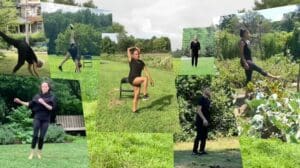Benjamin Rush (1746–1813) was a Founding Father, a signer of the Declaration of Independence, a social reformer, educator, and college founder. When describing his contributions to the Revolutionary War, he simply remarked: “I aimed well.” Widely considered the father of American psychiatry, Rush also championed a radical medical practice known as heroic medicine, which emphasized extreme bloodletting and purging.
Heroic medicine—sometimes called heroic depletion theory—emerged in 17th-century France, popularized by a Parisian physician nicknamed “Le Grand Saigneur” (“The Grand Bloodletter”). However, it did not coalesce into a dominant school of thought until the 18th century, largely due to Rush, who helped mainstream the aggressive treatment. As a founder of the University of Pennsylvania’s medical school, Rush was highly respected in the medical community. His response to the Yellow Fever epidemic of 1793 helped solidify heroic medicine’s prominence. That year, he wrote:
“I have found bleeding to be useful, not only in cases where the pulse was full and quick but where it was slow and tense. I have bled twice in many, and in one acute case, four times, with the happiest effect. I consider intrepidity in the use of the lancet, at present, to be necessary, as it is in the use of mercury and jalap, in this insidious and ferocious disease.”
The practices of bloodletting, purging, and induced sweating were not new. They originated with humoral theory, dating back to Hippocrates. Humoral theory posited that the body was governed by four humors—black bile, yellow bile, phlegm, and blood—and that health depended on maintaining a balance among them. Physicians aimed to restore balance by prompting various bodily discharges. While this was originally a measured practice, heroic medicine took it to extremes—removing up to 80% of a patient’s blood volume. Purging was achieved with massive doses of Senna, tartar emetic, and calomel, often leading to acute mercury poisoning. Sweating was induced by applying blisters to the skin.
As Yellow Fever decimated Philadelphia, many doctors fled the city. Rush remained, treating up to 100 patients a day. He subjected patients—and himself—to intensive regimens of bloodletting and purgatives. Many died under his care. He later acknowledged that some treatments, such as vinegar-soaked blankets, mercury rubs, and cold baths, had failed.
Though celebrated for his courage and commitment during the epidemic, Rush’s methods faced growing scrutiny. Journalist William Cobbett, among others—including some of Rush’s former teachers—criticized his practices. By this time, many in the medical field were moving away from heroic medicine and toward emerging scientific methods. Cobbett accused Rush of killing more patients than he saved. Rush sued for libel and won, but his reputation suffered. His medical practice declined, and critics went so far as to blame him for hastening the death of Benjamin Franklin.
In 1799, George Washington was treated with heroic methods on his deathbed: he was bled repeatedly, given mercury chloride, and subjected to blistering with cantharidin to induce sweating. He died shortly after. Although Rush was not present, some blamed him for the outcome. Ironically, the only doctor who opposed the bloodletting was one of Rush’s former students.
Rush himself insisted on being bled shortly before his own death.
Blog post written by Tess Rauscher




